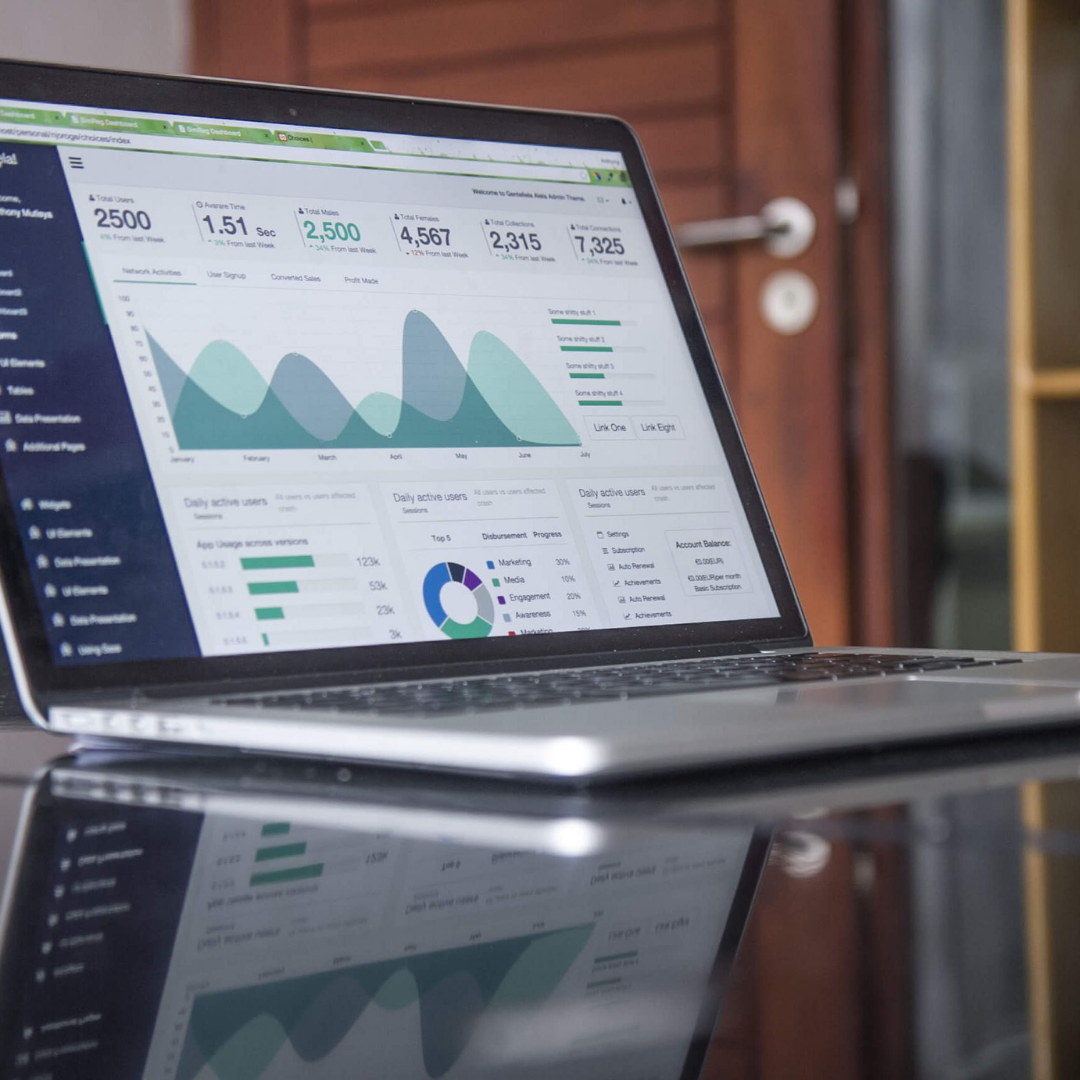As a startup owner, it would be a godsend to view glimpses of the future in a crystal ball and draw plans, and to know which direction your finances will sit in the approaching times.
Well, if not a divine intervention, financial forecasting could become your guiding light to help you move forward. Here is a concise guide that will help you understand financial forecasting and why it is essential for small businesses.

Planning for the future is crucial for small business owners. Financial forecasts can tell you when sales are not on target or when the repayment of a large amount is imminent. As a matter of fact, forecasting can offer you a clearer picture of when you will be able to see an increase in your sales and when you will need to hire enough staff.
- What Is Financial Forecasting?
- How to Forecast a Balance Sheet?
- Creating a Financial Forecast for Your Small Business
- Why do Small businesses need financial forecasting?
- Budgeting Vs. Financial forecasting. What’s the difference?
- What are the Types of Forecasting
What Is Financial Forecasting?
Financial forecasting refers to the process that attempts to predict future trends based on historical financial statements. The purpose of forecasting is to determine future plans for the company. It helps answer questions like how budgets will be allocated or how upcoming expenses will be planned in the near future.
The entire process relies on the anticipated demand for the services offered by the business.
A forecast determines whether events affecting a company, such as sales forecasts, will contribute to an increase or decrease in the price of its shares. This helps the analysts and investors in gauging upcoming trends and determining the prospects of the company.
Forecasts are also useful for companies who want a long-term view of their business operations.
Forecasting is useful for stock analysts as well, who use it to guess how key indicators, such as GDP or unemployment, will perform over the next quarter or year. Inaccurate estimates are more likely to occur in more distant forecasts. Statistical analysts can also utilize forecasting to analyze how a particular change will affect the overall output of the business. For example, they will be able to assess how increasing or changing business hours will affect customer satisfaction.
Financial forecasting can be carried out through the three main tools:
- An income statement depicts how much money comes into and leaves the business
- Pro forma balance sheets are used to show assets, liabilities, and equity. They are created by using data from other documents or accounting reports. Using more accurate data will result in more accurate financial forecasting
- A cash flow statement displays the amount of cash generated and spent during a particular period
How to Forecast a Balance Sheet?
Businesses can forecast future capital, assets, liabilities, and equity by analyzing past financial statements. These steps can help you:
Work capital forecast
Estimating your business's net working capital is the first step toward forecasting a balance sheet. The Net working capital corresponds to your current assets plus current liabilities. For projections of your future net working capital, analyze your historical asset and liability data. Typically, companies use at least two years' worth of financial data for this purpose. Based on your business’s past numbers, you can develop a realistic estimate of your net working capital.
Fixed Assets of the Project
Projecting your fixed assets comes next in forecasting a balance sheet. The fixed assets in your business are the tangible assets, which are fairly easy to estimate. In order to accurately predict the value of your fixed assets in the future, you must take into account depreciation.
You can do this by using the following the formula:
Debt Estimation
The next step is to estimate your financial debt, and the formula for the same goes as follows:
Forecast of Equity Position
A forecast of equity is an estimate of retained earnings plus your contributions of funds to the business. You can calculate projected equity by using the following formula:
Forecast Cash Position
Projecting your cash position is the final step in forecasting the balance sheet. You can estimate this by using your cash flow statement. This is the formula for forecasting cash position:
These steps will lead you to get an estimate of how things may appear in the times to come; thereby, helping you forecast your balance sheet.
Creating a Financial Forecast for Your Small Business
A lot of financial planning and analyses in large firms is handled by a dedicated group from their accounts division. Large businesses have magnanimous amounts of data to handle and predict. They may require a separate team for the purpose; however, not all businesses need to adopt this method. To get an estimation of where your business is heading, you can simply and steadily move using the following steps:
Create a vision for your company
You must actually write down your thoughts and ideas for your business on paper. Prepare a chart with your vision for the company and where you aim to see it in the times to come.
You can add important benchmarks or targets along with the dates. This will help create a perspective of the things that are to be achieved in the said amount of time. You can also include the long-term investments you would want to make and visualize how they may shape up after covering the timeframe.
Plan for future investments and debt repayments
This step wants you to consider the plans you had made pertaining to the new projects that are set to begin. These projects will require investment from you and now, is the time to ponder and carefully draft a final version of the expectations around these projects. How will you gather up funds? How will the loan or debt repayment be done?
All these are termed as the major or large expenses which require you to start with financial forecasting through your Pro Forma financial statements.
Review your financial history
Take a look at the company's balance sheet and income statement for the last three periods. When forecasting your financial situation over the next six months, look at your three most recent financial statements.
You can identify the percent change in each of the five major account types: revenue, expenses, assets, liabilities, and equity. Your accounting software will reveal account balances.
Analyze the ratios
You may opt out of this step if you have enough data from the previous step to support your cause; as it is arduous to analyze ratios.
The businesses that are interested in finding out more details can see the following ratios for the last three years. For businesses with little or no inventory, the quick ratio can be left off.
The numbers you receive after the calculation can be compared to the threshold values in the industry. This way you can estimate the financial health of your business as compared to market standards.
That said, small businesses may find their own ratios a bit on the lower side of the margin as large businesses exhibit huge ratios. Although it could be disappointing, it is important to bear in mind that the size of the business also plays a role while generating ratios.
Create a pro forma income statement
Now that you've analyzed your company's past, let's look forward and begin the steps to forecast.
A pro forma financial statement consists of an income statement, a balance sheet, and a cash flow statement. Create a spreadsheet by downloading the most recent editions of the statements. New businesses can take their sales information as the reference data to make forecasts, whereas older firms can refer to the comprehensive data they have.
Follow the steps below to draft a pro forma income statement:
Using a growth or decline percentage to predict future revenue and expenses
You can forecast your business's revenue and expense accounts by applying a growth or decline rate to your most recent income statement. The results of your analysis of financial statements and ratios help you forecast.
Multiple expense accounts will change by different percentages, so you need to project each separately. Unlike the cost of goods sold, fixed costs, that include rent and insurance, are less likely to increase as rapidly. Therefore, you must calculate realistic forecasts for each of the accounts identified.
Ratio analysis is a significant tool for sharpening forecasts and you can use the results of your analysis to further increase the precision of your forecasts.
Consider both internal and external factors when you are fine-tuning your estimates
Let's look at the meaning of internal and external factors.
Internal factors refer to the elements that are under your control. These include:
- Product introductions or discontinuations
- Recruiting new employees
- Tracking productivity
- Making investments in equipment or real estate
- Repayment of loans and debts
External factors are the ones that you cannot predict. Here are some examples of external factors:
- Variations and changes in customer behavior
- Amendments and changes in legislation and regulations of taxes
- An economic upswing or a recession
- Natural disasters or pandemic outbreaks, as we saw in 2020
So, it is advised you base your estimations and judgements on your observations of these internal and external factors for a pinpoint forecast.
Develop a pro forma balance sheet
Begin by creating your balance sheet using the most recent version, as you did when creating your income statement. Assets, liabilities, and equity all belong to the balance sheet.
Make sure that you have the cash to pay for expenses paid in cash, maintain accounts payable for credit payments, and accounts receivable for credit sales.
During this step, make sure your balance on fixed assets is adjusted. You should include the information of any major investment (land or machinery) at this point.
Your balance sheet must look accurate and showcase all the details pertaining to your assets, liabilities and equity (where assets = liabilities + equity).
Also, transfer retained earnings to equity to account for forecasted net income.
Prepare a pro forma cash flow statement
Business owners can understand where the cash they have in each period goes by reviewing their cash flow statement. You might want to break this statement into monthly or quarterly statements in order to prevent your business from spending more cash than it has at the time.
Readjust projections frequently
Frequently revisit your financial projections to adjust for strategy shifts, internal and external factors, and any new findings. Forecasts may waver often and therefore, you must be on your toes and ready with your data.
Why do Small Businesses Need Financial Forecasting?
You need a financial forecast to determine what drives growth. The forecast also lets you consider the resources at your disposal first. Being the head of the startup, it is important to have all the information handy such as the amount of cash on hand, receivables, and debts at any given time. You should also pay attention to the number of sales and customers you have. You can get a better grip on understanding the economy by studying financial forecasts.
Here are some scenarios where financial forecasts are beneficial:
- To chalk out an accurate plan for the future that takes into consideration the prevailing economic conditions
- To obtain insight into reports depicting overall business performance
- Predict future fluctuations, such as moving up to a new and higher tax bracket
- It is important to demonstrate to potential investors how their money will be used and how the business and various projects will shape up, eventually
- Set pragmatic and practical objectives after considering the information obtained
Budgeting Vs. Financial Forecasting
Financial forecasting is often mistaken for budgeting. Here are the differences between these two terms so that you can more clearly understand what they mean.
Budgeting, simply put, is the process of establishing financial objectives and goals.
Budgets should be reevaluated more than once a financial year if a company uses them for making decisions. It is possible to have budgets that target things that can't be achieved because of unforeseen circumstances. It focuses on the difference between the two numbers in revenue and expenses, cash flows, debt reduction, and the actual results.
Characteristics of budgeting are as enlisted:
- Revenue and expense estimate
- Cash flow projections
- Debt reduction estimates
- A budget facilitates a comparison of actual results with the proposed plan
The financial forecast, in turn, shows the company's performance against its targets and its potential for growth in the future. Following are the characteristics of financial forecasting:
- Calculates how to allocate a company's budget for a future period. The differences between financial forecasts and actual performance are not analyzed in financial forecasting
- The plan is regularly updated when operations, inventory, or business plans change
- Long-term and short-term plans may be created
- Financial forecasting allows management teams to make immediate decisions based on the forecast
What are the Types of Forecasting
Financial statements can be forecasted in three basic ways.
Qualitative Forecasting Method
When making future predictions, the qualitative method takes into account subject matter experts' opinions and historical trends.
Time Series Forecasting Method
This method is based entirely on past performance and trend analysis to predict future performance. In order to recognize emerging trends, you can use the time series method when you have access to at least a couple of years of historical data.
Causal Forecasting Method
This method analyzes a factor's relationship with other factors and takes historical data into consideration when forecasting. By far, this comes across as one of the most comprehensive forecasting methods.
How can Deskera Help You?
An online accounting and invoicing application, Deskera Books is designed to make your life easier. This all-in-one solution allows you to track invoices, expenses, and view all your financial documents from one central location.
The platform works exceptionally well for small businesses that are just getting started and have to figure out many things. As a result of this software, they are able to remain on top of their client's requirements by monitoring a timely delivery.
Thanks to our well-designed and well-thought-out templates, you can now anticipate that your work will become simpler. A template can be used for multiple actions, including invoices, quotes, purchase orders, back orders, bills, and payment receipts.
Creating dropship orders based on customer orders is easy if you run a drop shipping business. Take a small tour of the demo here to get more clarity:
One other platform that simplifies and expedites processes is Deskera People. You can now focus on the major activities of your business rather than worrying about the mundane tasks associated with hiring, payroll, leave, attendance, and others. Deskera offers automation on all these processes to make accounting a breeze for businesses. Additionally, it helps business growth by integrating Accounting, CRM, and HR software.
Key Takeaways
With that, we have come to a close, and here are the points to brush up on the topics discussed:
It may seem overwhelming to make a credible financial forecast. It turns out, however, that it's not as hard as it appears once dismantling it into several small components. We also recommend consulting a specialist if you're preparing a convincing business plan and forecast for attracting new investors.
- Financial forecasting refers to the process that attempts to predict future trends based on historical financial statements
- The purpose of forecasting is to determine future plans for the company. It helps answer questions like how budgets will be allocated or how upcoming expenses will be planned in the near future
- Financial forecasting can be carried out through the three main tools: Income statements, pro forma balance sheets, and cash flow statements
- Financial forecasts for small businesses begins with creating a vision for the company, planning future investments, reviewing financial history, analyze ratios, creating pro forma income statements and balance sheets, and adjusting projections through out the process
- Financial forecasting is recommended for small businesses as it helps them to draw an accurate plan for the future, predict future fluctuations, and demonstrate capabilities to the investors
- Qualitative Forecasting Method, Time Series Forecasting Method, and Causal Forecasting Method are the three most commonly used methods of financial forecasting
Related Articles














